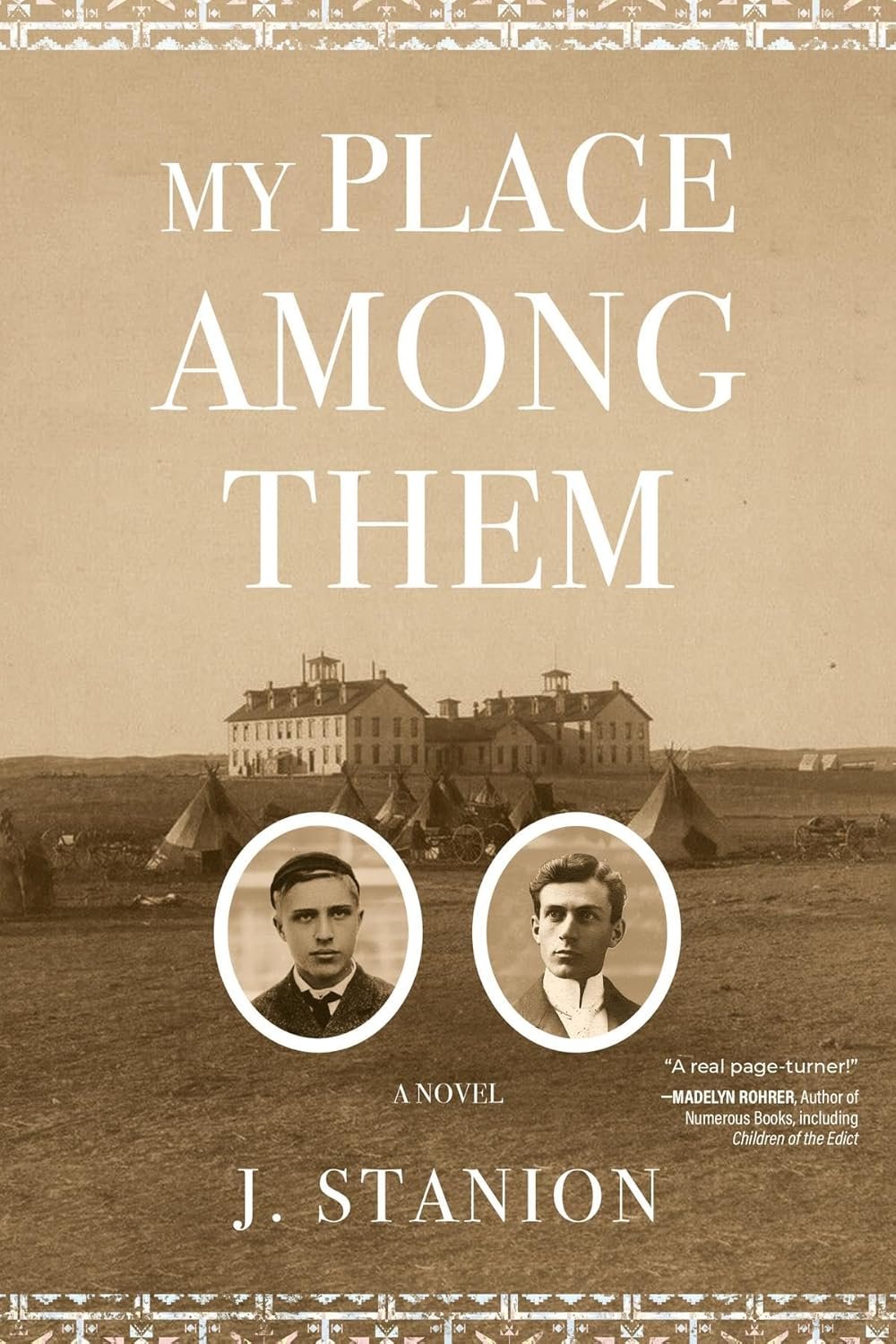A Captivating Tale of Identity, Resilience, and the Struggle to Find One’s Place in a Changing World
Gwen McPhail’s historical novel, My Place Among Them, masterfully intertwines personal history with compelling storytelling, exploring cultural identity, resilience, and the complexities of honouring the past while embracing the future.
Gwen McPhail is not just an author – she is a storyteller with a rare capacity to weave history, family legacy, and cultural reverence into an exquisite narrative that resonates deeply with readers. Having spent over three decades imparting knowledge and nurturing young minds as a science and agriculture educator, Gwen’s remarkable journey into literature is as inspiring as it is impactful. Her debut novel, My Place Among Them, written under the evocative pen name J. Stanion, is a masterclass in historical fiction that honours truth, tradition, and the intricacies of the human experience.
Drawing from an extraordinary manuscript passed down through her family, Gwen brings to life the stories of both John Iron Horse and Carter Heath– two compelling protagonists navigating the challenges of identity, heritage, and their inner moral compasses. Set against the backdrop of America’s complex relationship with its Indigenous peoples at the turn of the 20th century, the novel reveals Gwen’s unparalleled dedication to authenticity, achieved through meticulous research and collaborative consultation with the Lakota community. This is a book that not only transports its readers to another time but also offers a powerful lens through which to reflect on modern-day cultural and social dynamics.
Gwen’s ability to infuse her characters with genuine emotion and depth is undoubtedly shaped by her years of teaching, where she observed the unfiltered joys, sorrows, and resilience of young people. Her commitment to preserving historical accuracy while delivering a compelling and compassionate story is further testament to her extraordinary skill as a writer. My Place Among Them is a novel rich with relevance, a labour of love that bridges generations and sheds light on stories both personal and collective.
In this exclusive interview, Gwen McPhail takes us behind the scenes of her debut work, sharing the inspirations drawn from her family’s rich history and her intimate connection with the land and its stories. From the painstaking research process to her reflections on balancing historical fact with creative storytelling, Gwen’s insights serve as a guiding light for aspiring authors and lovers of literature alike. Prepare to explore the heart and mind of a truly remarkable storyteller whose voice and vision have enshrined her place among contemporary literary greats.
McPhail’s novel is a beautifully researched and deeply moving exploration of history, culture, and personal identity, capturing the essence of storytelling with authenticity and emotional depth.
What inspired you to write “My Place Among Them,” and how did your family’s history influence the narrative?
“My Place Among Them” was taken from a manuscript written by my great-grandfather documenting his experiences with Indigenous people while working for the Bureau of Indian Affairs at the turn of the 20th century. For fear of losing his position, he never made his work public. It passed to his daughter and in turn to my father who died of cancer before he finished preparing the document for publication. He gave me the original document, along with his edited version, asking that I publish the story. I grew up listening to stories about both protagonists and hearing my father’s respect for the Indigenous people of America both of which motivated me to see the work to completion.
Could you elaborate on the research process you undertook to authentically depict the experiences of Indigenous peoples in your novel?
Inspired by family stories, I spent my childhood reading books about the Indigenous people of America. During my earliest edits of the manuscript, I reached out to living members of the Lakota tribe including elders on the Pine Ridge Reservation and archivists at Oglala Community College whenever details from the manuscript conflicted with what I thought I knew about Lakota culture. I had copies of letters and employment records that referenced what my great-grandfather observed over his lifetime and internet access to rosters and administrative records of multiple schools run by the US Government from 1875 to 1955. I purchased a number of books recently written by Indigenous authors including an Indigenous history of America.
How did your 31 years of teaching experience shape your approach to storytelling and character development?
Much of my teaching career was spent at the Middle School level, where I observed the emotional development of many children as they changed and matured over time. Every hurt, every joy, every nuance of emotion was on display almost every day in my classroom. I was involved with other teachers, administrators and parents, all of whom shared their personalities and emotions over the years. Teaching requires a certain amount of entertainment skill to keep students focused, and I honed those skills over my 31 years in the classroom. I believe my teaching experience allowed me to close my eyes and immerse myself in memories that gave life to my characters and details to their actions in various settings.
In what ways do you hope readers will connect with the character of John Iron Horse and his journey?
I hope that readers will connect with John’s habit of seeking out quiet moments to reflect on the events of his life and their impact on his future and to seek guidance from his cultural heritage. Likewise, I hope they will find value in Carter’s persistence in striving to achieve his own personal definition of success amidst the demands of a bureaucracy where success was often defined only by power and money.
Can you discuss the significance of the novel’s title, “My Place Among Them,” in relation to the themes explored?
“My Place Among Them” is the story of two men who struggle to succeed in the world they live in. John Iron Horse strives to find his place in a society that is foreign to his heritage while Carter endeavors to find happiness in a bureaucracy he frequently disagrees with. It is the story of their efforts to do what they believe is right without giving up their individual values and identity.
How do you balance historical accuracy with creative storytelling in your writing?
For historical fiction, it is important to immerse the reader in a specific time and place in history. I use precise descriptions of places, events and emotions that impact my characters to help the reader engage with the story. Sometimes this results in long passages that can be boring without meticulous editing to keep the reader focused. However, I make every effort to avoid graphic depictions of violence or sex, preferring to leave those vignettes to the reader’s imagination.
What challenges did you face in bringing the historical context of the late 1800s to life for contemporary readers?
For me, the hardest part of writing this story for contemporary readers was editing the often stilted, Victorian-era wording of the original manuscript while honoring the propriety of the era. It was hard, personally, to change my great-grandfather’s long sentences and often verbose exchanges between characters. Having reviewed the original work hundreds of times, it was difficult to portray complex emotions with more modern words, particularly because, at the time, emotions were often hidden behind strict cultural mores that contemporary readers might not appreciate. It was also difficult to portray the harshness of life on reservations without focusing solely on violence and poverty.
As an author, what advice would you offer to those looking to write historical fiction that honours the cultures and histories it represents?
It is imperative that an author know the details and history of the culture they are writing about and understand that there are usually multiple “sides” to every historical event. In depth research is important because readers pick up on errors in historical content quickly and may question the authenticity of the story or, worst of all, simply put the book down.
What particular skills do you look for in a writer of historical fiction?
A strong voice, first of all. The one thing that makes a novel unique is not so much the setting or the characters so much as the voice of the writer. Too many historical novels feel the same — the setting has changed, but the book could have been written by anyone. So what really sets it apart, and the first thing I look for, is a strong author voice. That being said, a strong sense of history and adequate research so that the story feels genuine are essential, of course. I want a story that’s unique and interesting, so it’s best if the writer has a passion for that particular period or the events surrounding the novel. I suppose I also prefer an author with a good vocabulary, particularly appropriate to the setting and time. I like to see a clear sense of mood. Good rhythm to their words. Clear pacing. Great characters in interesting situations. Strong dialogue. Vibrant scenes. Action or events that move me from one page to the next. And, if it’s to have a longlasting quality to it, themes that are greater than boy-meets-girl (which works fine in a historical romance, but we like to see more in a true historical saga).
“A strong voice, first of all. The one thing that makes a novel unique is not so much the setting or the characters but the voice of the writer.” – Gwen McPhail
EDITOR’S CHOICE
A powerful, beautifully written novel that captures resilience, identity, and the human cost of forced assimilation with depth and historical authenticity.



